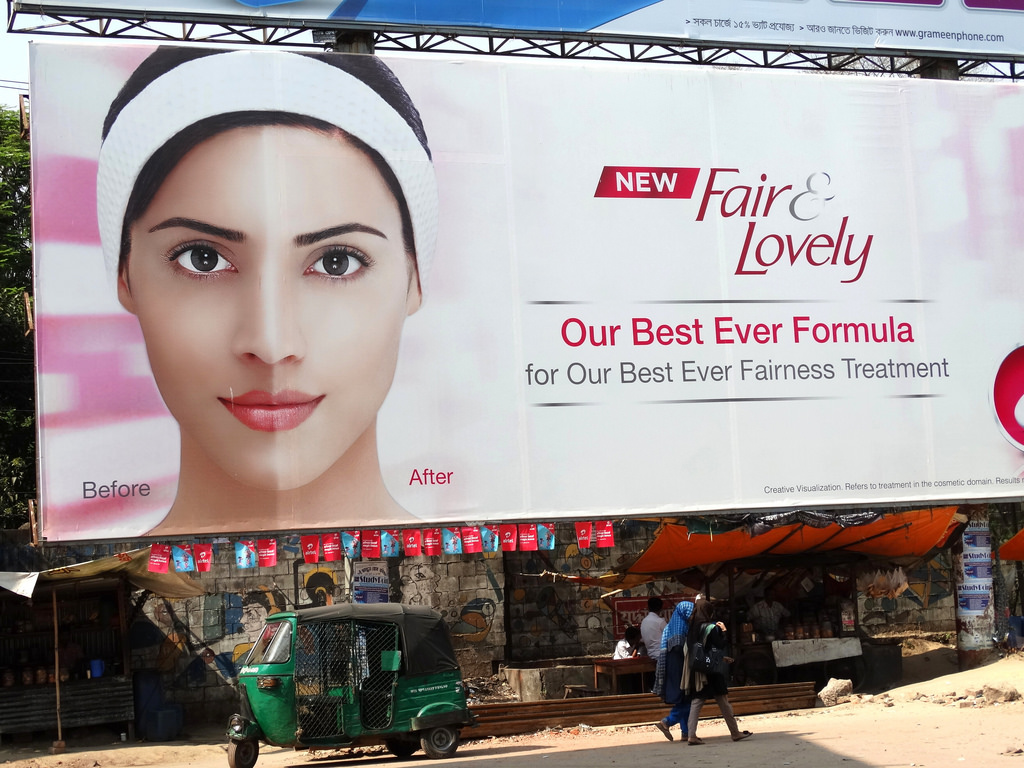“You’re so pretty for someone who’s so dark,” my Filipino aunt mused, eyeing me up and down. This was the first contact we’d had in eight years: a microaggression-turned-
For the entire month I spent back home in the Philippines last summer, I was branded “pretty dark-skinned girl.” I walked along entire supermarket aisles of skin-whitening products and Papaya soap, was photoshopped lighter in photographs and watched teleseryes, Phillipine television dramas, where light-skinned charismatic girls handled dark-skinned bullies.
After 300 years of European and American colonization, Filipino colorism remains a pervasive, driving force behind internalized negative perceptions of dark-skinned individuals. Ronald Hall, a social work professor at Michigan State University, describes this internalization as the “bleaching syndrome,” which has partly resulted in the historic slavery and colonialism imparted by Europeans. During these eras, light skin tones and Anglican features were upheld as the beauty standard. As a result, colorism blatantly persists among a myriad of European-colonized countries around the world, including the Philippines.
Feminist author Alice Walker first coined the term “colorism” in her 1982 essay, “If the Present Looks Like the Past, What Does the Future Look Like?” She describes it as “prejudicial or preferential treatment of same-race people based on their color.” In other words, skin bias toward those of lighter complexion. Although it’s clear racism still exists within our country, colorism remains harder to differentiate, and therefore much more pernicious, given its usual existence within a singular ethnic demographic.
Matthew Harrison and Kecia Thomas, when they were both psychologists at the University of Georgia, explored this trend within the context of the job market. Different resumes with varying educational levels and skills were assigned to light-skinned and dark-skinned applicants. Each resume was accompanied with the photograph of the applicant and then given to the experiment’s participants to judge the candidate more deserving of the job. Harrison and Thomas concluded that “skin color is such a salient feature of an applicant that it can actually transcend and ultimately overshadow one’s actual knowledge and experience.” They discovered that dark skinned black males could ultimately possess more educational background and work experience but still not be as highly rated as someone with lighter skin and evidently less qualifications. Mills College sociology professor Margaret Hunter adds that lighter-skinned individuals benefit from the halo effect, a psychological phenomenon in which a perceived characteristic influences one’s overall perception of character. Because lighter-skinned individuals are closer to the Eurocentric standard of beauty, their worth and value in the workplace may be considered higher than their darker counterparts.
Outside the workplace, colorism persists within schools. In a 1990 study conducted by sociology professors Michael Hughes and Bradley R. Hertel, it was found the education gap between whites and blacks were shockingly near identical to the gap found between light-skinned and dark-skinned African Americans.
Colorism doesn’t stop at these institutions, either. It’s prevalent in the TV shows we binge watch every weekend and the box office hits we view on screen. Just a couple of months ago, many fans of the late jazz musician Nina Simone flocked to theaters, only to see a lighter skinned Zoe Saldana portray her character. Many were outraged and cited it as a blatant example of colorism. When was the last time you watched a positive dark-skinned Asian character on TV? This is more difficult to remember than recalling the numerous dark-skinned actors who have played villains and bullies.
The once-concealed topic of colorism is finally gaining more awareness through the likes of normal, everyday individuals on social media. #BrownAndUnbothered urged those once chastised for their darker complexions to post selfies, collectively celebrating the pride in having dark skin. With this progress comes the same, still-prevalent stratification found in our workplaces, schools and media. The stigma needs to be removed, and it starts with addressing this issue in these institutions that they commonly prevail in.
Last week, I participated in #MagandangMorenx, a hashtag to promote “beautiful dark-skinned” Filipino girls on Twitter. I posted about the ridiculous existence of skin-whitening products and of being told to stay inside in order not to tan. That’s where the change begins, once we become unafraid to address colorism. This issue simply cannot remain black and white.
Maris Medina is a freshman journalism major. She can be reached at marismedina29@gmail.com.



